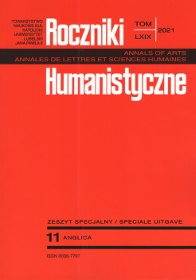Word Order Alignment in Three-Argument Constructions of Irish
Word Order Alignment in Three-Argument Constructions of Irish
Author(s): Brian NolanSubject(s): Language and Literature Studies, Theoretical Linguistics, Syntax
Published by: Towarzystwo Naukowe KUL & Katolicki Uniwersytet Lubelski Jana Pawła II
Keywords: Irish ditransitive; word order; nominal and person hierarchies; syntactic weight; post-positioned theme
Summary/Abstract: This study examines the ordering of the actor (A), theme (T) and recipient (R) arguments in three-argument clauses, the prepositional ditransitive constructions of Irish. The ordering of the A, T and R arguments in three-argument clauses is an area where linguistic complexity is manifest in the Irish grammar. Across languages, the factors which influence word order adjustments, from a basic word order of A-T-R, are known to include iconicity, information structure and topicalisation, the distinction between given and new information, the effects of the various referential hierarchies, and syntactic weight. We show that some, but not all, of these apply to the Irish data. Under certain conditions, the word order of these Irish three-argument clauses changes in a different alignment. Specifically, if the T is an accusative pronoun then the word order alignment changes and consequently the T occurs after the R in clause final position, yielding an A R-T word order. We argue that post-positioning of the theme PN is due to the alignment effects that can be explained by reference to the nominal and person hierarchies, and their intersection with the principle of syntactic weight. The Irish grammar seems to be disposed to place the accusative object PN T in clause final position in word order, adding an imposed salience. We characterise the effects of the nominal and person hierarchies, and syntactic weight, on word order within these constructions. We use elements of the functional model of Role and Reference Grammar in this characterisation. These word alignment effects raise important questions of the distribution of linguistic complexity across the grammar of Irish, and the interfaces between semantics, and syntax, as well as information structure.
Journal: Roczniki Humanistyczne
- Issue Year: 69/2021
- Issue No: 11S
- Page Range: 149-169
- Page Count: 2
- Language: English

